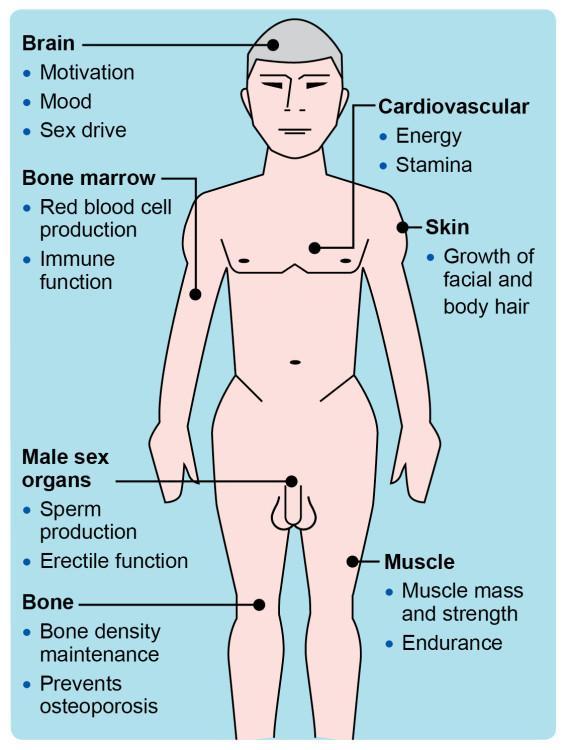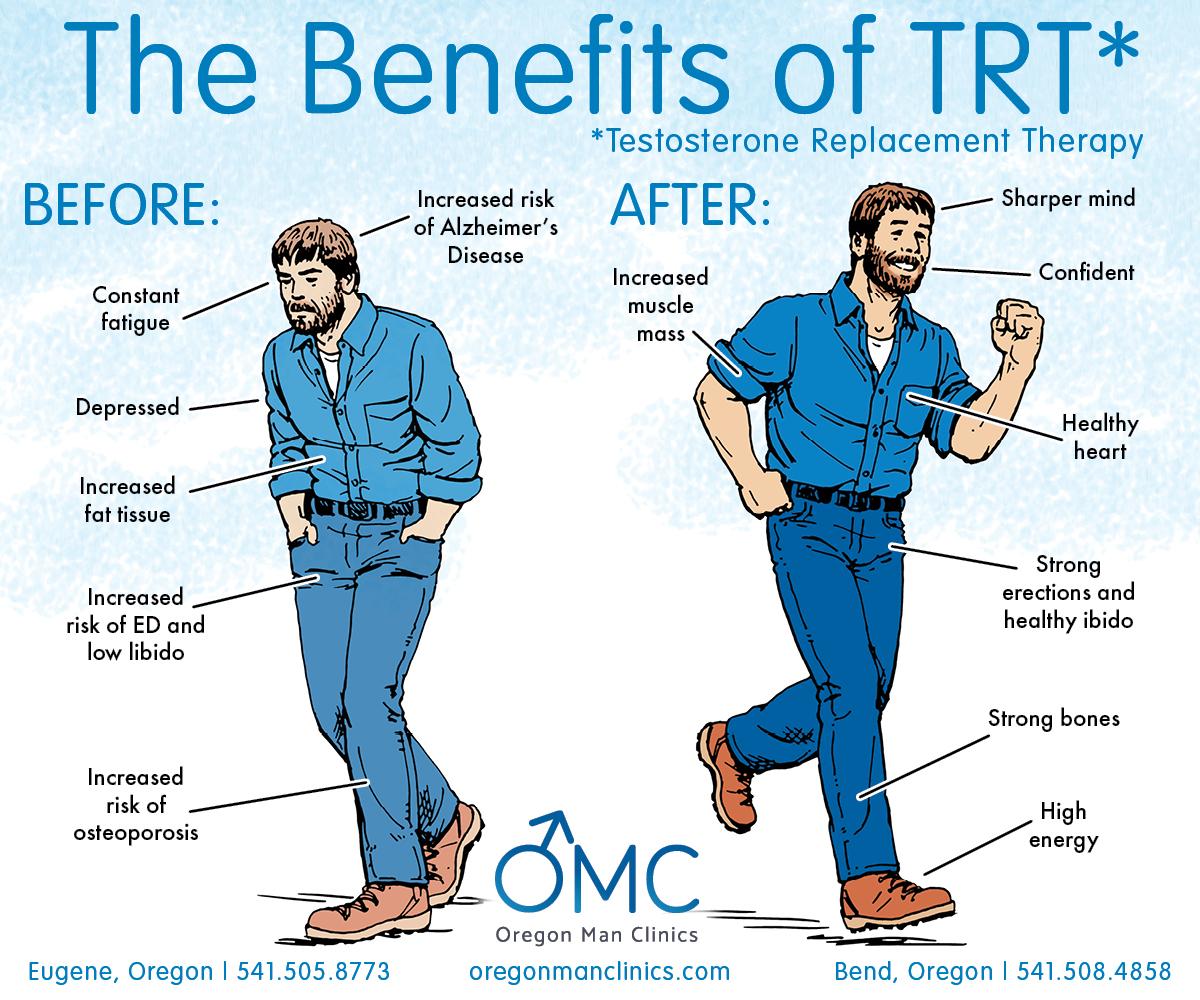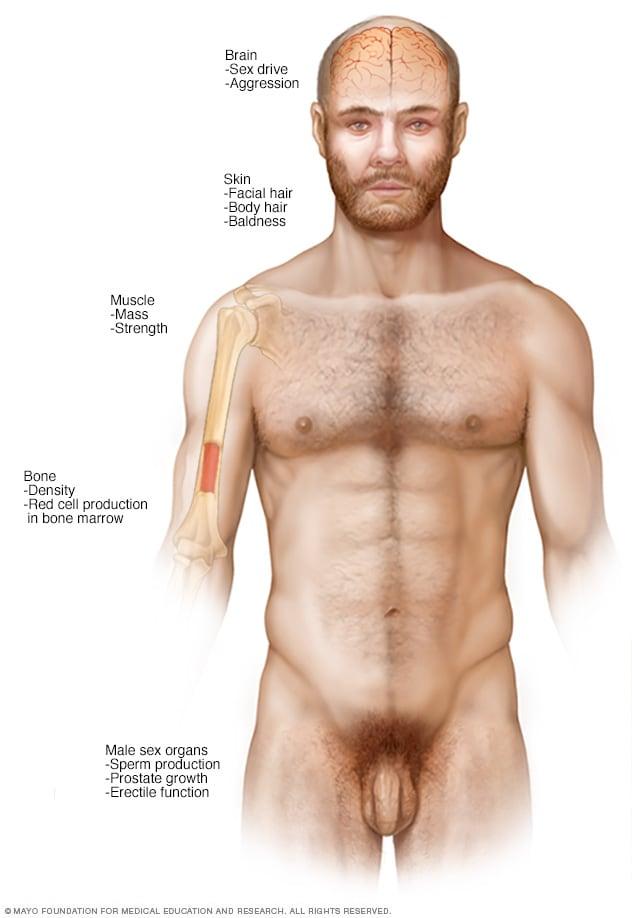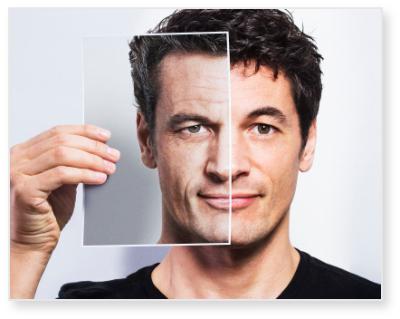As the sun sets on the horizon of youthful vigor, many men find themselves facing the gradual but inevitable march of time—an experience marked not only by physical changes but by shifts in energy, mood, and overall vitality. Enter testosterone therapy, a modern intervention that has garnered attention as a potential remedy for the fluctuations in this vital hormone that accompany aging. In this exploration, we delve into the science behind testosterone, examining its role in male health throughout the decades and uncovering the implications of therapy as an avenue for combating the effects of age. From understanding the intricacies of hormonal balance to weighing the benefits and risks associated with treatment, this article aims to provide a comprehensive overview for those navigating the complexities of men’s aging in an ever-evolving landscape of medical advancements. Join us as we unpack the nuances of testosterone therapy and its potential to redefine the aging narrative for men.
Understanding Testosterone Decline and Its Impact on Aging Men
As men age, a gradual decline in testosterone levels is a common physiological change. This decline often begins around the age of 30 and can lead to a variety of symptoms that significantly affect quality of life. Understanding the implications of reduced testosterone is crucial for identifying potential interventions. Symptoms may include:
- Decreased energy levels: Many men report feeling more fatigued and less motivated.
- Reduced muscle mass: Loss of muscle strength can hinder physical activity.
- Changes in mood: Increased feelings of irritability or depression are more frequent.
- Impaired sexual function: Diminished libido or erectile dysfunction can arise.
The interplay between declining testosterone and various age-related health conditions is an area of increasing research. Men with low testosterone levels are at a higher risk for metabolic syndrome, obesity, and cardiovascular disease. Addressing these symptoms early on can lead to better health outcomes. The following table highlights some common issues associated with low testosterone:
| Health Impact | Associated Risk |
|---|---|
| Obesity | Increased fat accumulation |
| Diabetes | Insulin resistance |
| Heart disease | Higher cholesterol levels |

The Connection Between Testosterone Levels and Vitality
Testosterone plays a pivotal role in defining male vitality, directly influencing energy levels, muscle mass, and overall well-being. As men age, testosterone levels naturally decline, often leading to notable changes in physical and mental health. Low testosterone can result in feelings of fatigue, diminished strength, and a decline in sexual drive. Understanding this connection is critical for those looking to rejuvenate their vitality and reclaim their zest for life. Some common indicators associated with low testosterone levels include:
- Decreased energy levels
- Reduced muscle mass
- Impaired cognitive function
- Depression and mood swings
Addressing testosterone deficiency through therapy can lead to significant improvements in vitality. Various studies suggest that testosterone replacement therapy (TRT) not only helps alleviate symptoms associated with low testosterone but also promotes a sense of emotional and physical wellness. Moreover, the therapy can enhance various factors vital for maintaining vitality, such as:
| Factor | Impact of TRT |
|---|---|
| Energy Levels | Increased stamina and reduced fatigue |
| Muscle Strength | Enhanced muscle growth and recovery |
| Mood Stability | Improved mood regulation and reduced anxiety |

Evaluating Signs of Low Testosterone in Mature Men
As men age, they may experience a subtle yet significant decline in testosterone levels, which can lead to various physical and emotional changes. Common signs to watch for include:
- Increased fatigue and reduced energy levels
- Decreased motivation and mood swings
- Loss of muscle mass and increased body fat
- Reduced libido and sexual dysfunction
- Difficulty concentrating and memory lapses
Recognizing these symptoms is the first step in understanding if low testosterone is affecting your quality of life. If any of these signs resonate, tracking your overall health and wellness becomes all the more critical.
Additionally, physiological changes taking place as testosterone levels fluctuate can be measured through various metrics. A simple table summarizing potential indicators of low testosterone can aid in self-assessment:
| Indicator | Possible Impact |
|---|---|
| Energy Levels | Fatigue and lethargy |
| Muscle Mass | Loss of strength |
| Body Composition | Increased fat accumulation |
| Mood Swings | Increased irritability and depression |
| Sexual Desire | Decreased libido |
This table provides a quick reference to understand how low testosterone can manifest in daily life. If you identify multiple indicators from both the list and the table, it may be worth consulting with a healthcare provider for further evaluation and potential treatment options.

The Benefits of Testosterone Therapy: What Research Reveals
Research indicates that testosterone therapy can significantly improve the quality of life for men experiencing age-related hormonal decline. One key benefit includes enhanced muscle mass and strength, which are crucial for maintaining overall physical health as one ages. Furthermore, testosterone therapy has been linked to increased bone density, reducing the risk of osteoporosis and fractures in older adult men. These physiological improvements can lead to a more active lifestyle, promoting better cardiovascular health and overall wellbeing.
In addition to physical benefits, testosterone therapy may also positively impact mental health. Studies have shown that men undergoing this treatment report improved mood, increased energy levels, and a reduction in symptoms of depression and anxiety. Another significant finding is the effect of testosterone on cognitive function, where patients have experienced better memory retention and sharper focus. These benefits highlight the importance of considering hormonal balance as part of a comprehensive approach to healthy aging.
Navigating Treatment Options: Injections, Gels, and Pellets
Men considering testosterone therapy have a variety of options available to them, each with its unique benefits and challenges. Injections are one of the most common methods, typically administered every one to two weeks. They provide a quick boost in testosterone levels and can be done in a physician’s office or at home with proper training. However, users may experience fluctuations in hormone levels and potential discomfort at the injection site. On the other hand, gels offer a convenient daily application that absorbs through the skin. This method can lead to more stable testosterone levels, but there are concerns about transference to partners and potential skin irritation.
Another increasingly popular option is pellets, which are small, testosterone-filled pellets embedded under the skin. They deliver a consistent release of testosterone over several months, minimizing the need for frequent dosing. This method can be particularly appealing for men seeking a low-maintenance approach. When weighing these alternatives, it’s essential to consider personal lifestyles and the desired outcomes. Below is a concise comparison to help navigate the choices:
| Treatment Option | Frequency of Administration | Stability of Testosterone Levels | Potential Drawbacks |
|---|---|---|---|
| Injections | Every 1-2 weeks | Variable | Injection site discomfort |
| Gels | Daily | Fairly stable | Risk of transference |
| Pellets | Every 3-6 months | Consistent | Requires minor surgical procedure |
Potential Risks and Considerations of Testosterone Therapy
While testosterone therapy presents several benefits for aging men, it also carries potential risks that must be carefully considered. The decision to pursue such treatment should involve a comprehensive assessment by a healthcare provider to weigh the advantages against the possible downsides. Some common risks include:
- Cardiovascular Issues: Increased risk of heart attacks and strokes has been observed in some studies, particularly among older men with pre-existing heart conditions.
- Hormonal Imbalance: Excessive testosterone can lead to an imbalance, resulting in side effects such as gynecomastia (breast enlargement) and mood fluctuations.
- Sleep Apnea: The therapy may exacerbate or trigger sleep apnea, a serious sleep disorder that can affect overall health and quality of life.
Moreover, long-term implications of testosterone therapy are still not fully understood, necessitating ongoing monitoring and evaluation. Patients should be aware of other considerations, including:
- Infertility: Testosterone therapy may suppress sperm production, leading to infertility in some men.
- Prostate Health: There is ongoing debate about testosterone’s role in prostate cancer progression, emphasizing the need for routine screenings.
- Cost and Accessibility: Not all insurance plans cover testosterone therapy, potentially leading to significant out-of-pocket expenses over time.
Adopting a Holistic Approach to Men’s Health and Hormonal Balance
When it comes to navigating the complexities of men’s health, particularly as they age, a comprehensive strategy is essential. Holistic care emphasizes the integration of physical, mental, and emotional well-being, recognizing that hormonal balance is a critical component in this equation. Men experiencing a decline in testosterone often encounter symptoms ranging from fatigue and reduced libido to mood swings and increased body fat. Addressing these issues isn’t solely about hormone replacement; it involves looking at lifestyle factors such as nutrition, exercise, and stress management that contribute to overall health and hormonal balance. Embracing a wellness-oriented lifestyle allows men to not only optimize testosterone levels but also enhance their quality of life.
Incorporating various elements into day-to-day routines can further assist in maintaining hormonal equilibrium. Consider these key strategies:
- Regular Physical Activity: Engaging in both resistance training and cardio can significantly boost testosterone.
- Balanced Nutrition: A diet rich in healthy fats, lean proteins, and essential vitamins supports hormonal health.
- Quality Sleep: Sufficient sleep is vital as testosterone levels naturally fluctuate during sleep cycles.
- Stress Reduction: Mindfulness practices and recreational activities can help lower cortisol levels, indirectly supporting testosterone production.
Additionally, it is beneficial to monitor key hormone levels with your healthcare provider to tailor an individualized approach. A multi-faceted wellness plan that encompasses both lifestyle choices and medical advice can lead to significant improvements in overall vitality and hormonal balance.
Q&A
Q&A: Understanding Testosterone Therapy and Men’s Aging
Q1: What is testosterone, and why is it important for men?
A1: Testosterone is a hormone primarily produced in the testicles, playing a crucial role in various bodily functions such as maintaining muscle mass, bone density, and sex drive. It also contributes to mood regulation and overall energy levels. As men age, testosterone levels naturally decline, affecting these areas of health.
Q2: How does aging affect testosterone levels in men?
A2: Generally, men begin to experience a gradual decline in testosterone levels after the age of 30, with an average decrease of about 1% per year. This decline can sometimes lead to symptoms like fatigue, reduced libido, depression, and cognitive changes, prompting some men to consider testosterone therapy.
Q3: What is testosterone therapy, and how does it work?
A3: Testosterone therapy involves the administration of testosterone to replenish low levels in the body. This can be done via injections, patches, gels, or pellets. The therapy aims to restore testosterone levels to a healthier range, potentially alleviating symptoms associated with low testosterone and improving quality of life.
Q4: Who should consider testosterone therapy?
A4: Testosterone therapy may be appropriate for men diagnosed with hypogonadism, a condition where the body does not produce enough testosterone due to medical issues. It’s essential that men considering therapy undergo a thorough evaluation by a healthcare provider to ensure they truly have low testosterone levels and to discuss the potential benefits and risks.
Q5: What are the potential benefits of testosterone therapy?
A5: Many men report improved energy levels, increased libido, improved mood, enhanced muscle mass, and better bone density after starting testosterone therapy. It can also assist in cognitive functioning and support heart health when monitored correctly.
Q6: Are there any risks or side effects associated with testosterone therapy?
A6: Yes, like any treatment, testosterone therapy comes with potential risks. These include increased red blood cell count, sleep apnea, acne, breast enlargement, and in some cases, prostate problems. It’s crucial for men to work closely with their healthcare providers to monitor their health throughout the therapy.
Q7: Can lifestyle changes help manage testosterone levels?
A7: Absolutely! Healthy lifestyle choices can positively impact testosterone levels. Regular exercise, particularly strength training, maintaining a balanced diet rich in nutrients, managing stress, and getting adequate sleep can all contribute to healthier hormone levels and overall well-being.
Q8: Where can men get more information about testosterone therapy?
A8: Men seeking more information should consult healthcare professionals specializing in endocrinology or urology, as they can provide guidance based on individual health needs. Additionally, reputable health organizations and websites offer valuable resources on understanding testosterone and aging.
Q9: What’s the takeaway message regarding testosterone therapy and aging?
A9: Testosterone therapy can be a viable option for some men experiencing symptoms of low testosterone, particularly when caused by hypogonadism. However, it should be approached cautiously, with a thorough understanding of the risks, benefits, and the importance of regular medical supervision. Healthy lifestyle choices remain a vital component of maintaining hormonal balance as men age.
In Summary
In the intricate tapestry of aging, testosterone therapy presents itself as a double-edged sword—offering both potential benefits and possible risks. As men navigate the complex landscape of aging, understanding the role of testosterone becomes essential. With ongoing research and evolving medical insights, the conversation around hormone replacement therapy continues to gain traction, emphasizing the need for informed decision-making.
Ultimately, the journey of aging is uniquely personal, shaped by individual health, lifestyle choices, and long-term goals. Whether considering testosterone therapy or exploring alternative avenues, men are encouraged to engage in open dialogues with healthcare professionals. By prioritizing knowledge and self-awareness, they can take proactive steps towards maintaining vitality and well-being in their golden years.
As we move forward, let us remain curious and informed, recognizing that the quest for a fulfilling life doesn’t end with age—it merely transforms, inviting us to embrace new possibilities.










